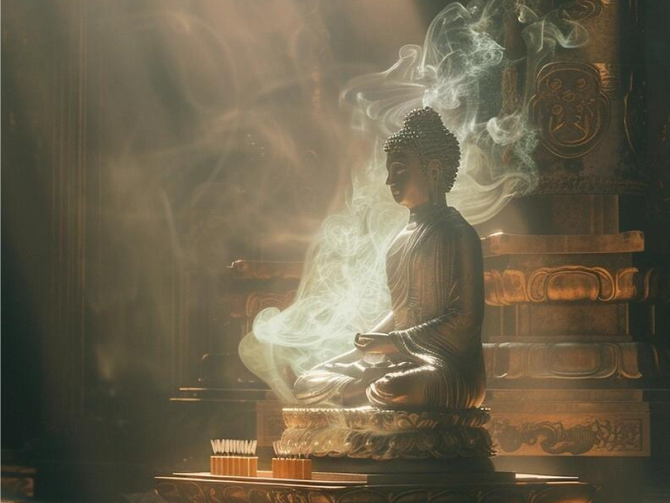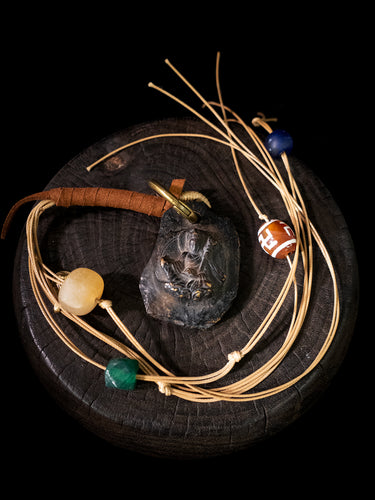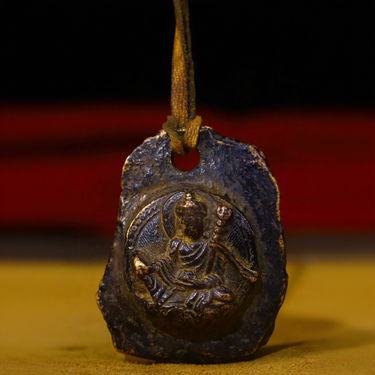
Mount Kailash is enveloped in rich mythology and is considered one of the most sacred places in several religions, including Hinduism, Buddhism, Jainism, and Bon. The mountain itself is said to be the abode of gods and a place of immense spiritual power. This sanctity is often extended to natural elements associated with or found near the mountain, including crystals.

Legends and Beliefs Regarding Crystals from Mount Kailash:
Abode of Deities:
In Hinduism, Mount Kailash is believed to be the abode of Lord Shiva and his consort Parvati. In Tibetan Buddhism, it is said to be the home of the Buddha Demchok (also known as Demchog or Chakrasamvara), who represents supreme bliss.
Crystals found near such a holy site are thought to be infused with the divine energies of these deities, making them particularly powerful for spiritual practices

Confluence of Cosmic Energies:
Mount Kailash is often depicted as the cosmic axis or the center of the universe in various traditions. It's considered a point where heaven meets earth, and thus, any natural element from this place is believed to harbor a convergence of cosmic energies.
Crystals, known for their ability to amplify energy, when sourced from such a spiritually potent place, are believed to possess enhanced qualities for healing, meditation, and protection.
Purity and Untouched Nature:
The remote and pristine environment of Mount Kailash, largely untouched by human activity, contributes to the purity of the crystals found there. This untouched quality is thought to preserve the natural energies of the crystals, making them more powerful than those collected from more accessible or commercially exploited areas.
Symbolic Representation of Enlightenment:
Crystals, with their clear and flawless appearance, are often used in spiritual traditions as symbols of clarity, purity, and enlightenment. Crystals from Mount Kailash, therefore, represent not only physical purity but also spiritual illumination.
Historical and Cultural Reverence:
The historical and cultural reverence for Mount Kailash adds to the perceived power of its crystals. Pilgrims and followers of the spiritual traditions that revere Kailash might attribute special powers to the crystals based on their faith and the stories passed down through generations.

Scientific Perspective on Crystals from Mount Kailash:
The geological aspects of Mount Kailash contribute to the unique qualities of the crystals found near it. The area is part of a complex geological structure formed through the collision of the Indian and Eurasian tectonic plates, which led to the rise of the Himalayas. This tectonic activity has created a rich variety of minerals and crystals, some of which are rare and unique to the region.
The extreme conditions under which these crystals form can lead to exceptional clarity and rarity, enhancing their value both aesthetically and mineralogically. For instance, the pressure and temperature conditions in this remote area can result in crystals with fewer inclusions, making them not only more beautiful but also potentially more 'pure' in a geological sense.
Moreover, the remoteness and pristine nature of Mount Kailash ensure that these crystals are less exposed to pollutants and human alteration, preserving their natural structure and composition. This purity is often associated with a higher 'vibrational' quality in metaphysical circles, which, while not scientifically quantifiable, adds to their allure among crystal enthusiasts and collectors.
By combining the tangible aspects of their formation with the intangible qualities bestowed by their sacred surroundings, crystals from Mount Kailash hold a place of distinction that appeals to both spiritual seekers and scientific observers alike. Their reputation as powerful conduits for energy is as much a reflection of their physical properties as it is of the reverence in which the mountain itself is held.
























